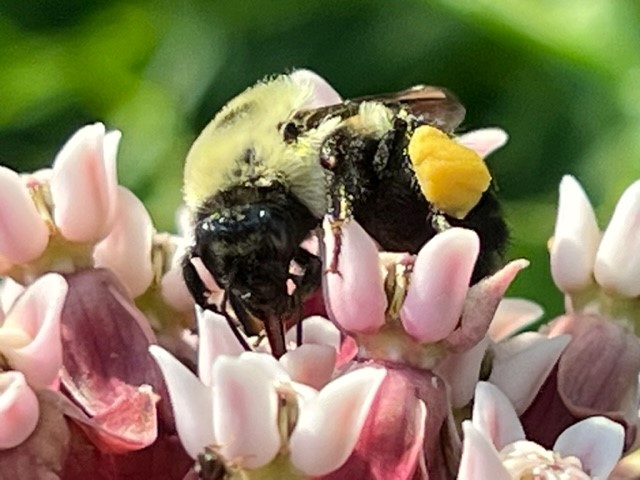Buzzworthy Bumblebees: Our Amazing Local Pollinators
Most people do not like any kind of insect that can sting them and for the most part, I am in agreement. However, I love bumblebees! I love their size, their coloration, the work they do and the fact that they’re pretty easy to photograph.
There are nearly 50 different species of bumblebees in North America, and I do not claim to be able to tell many apart. They all belong to the genus Bombus within the family Apidae, which includes honeybees, carpenter bees, etc.
Bumblebee Lifecycle
Bumblebees are the only bees native to North America that are truly social. They live in colonies, have a division of labor, and have multiple generations within the colony. This may sound like the non-native European honeybees, but bumblebees have an annual lifecycle. At the end of the summer season, all of the members of the colony will die. The only ones to survive are the newly emerged, fertilized queen bees that will hibernate through the winter.
Once spring arrives, the queens will emerge and go about establishing a new colony. A queen will find an appropriate nesting spot where the colony can grow to 50–500 individuals. The ideal nesting spot is a cavity, which will be the right size to grow into. It can be above or below the ground, in places like a hollowed out tree, an abandoned bird nest or an abandoned rodent hole.
It’s Off to Work Bees Go
After the newly emerged queen finds a suitable nesting spot, she builds the first brood cells from wax and makes sure there is enough pollen and nectar in them to sustain the developing larvae in the eggs she then lays. It takes between four to five weeks for the young to hatch and transition into adult bees. The members of this first generation become the worker bees. They forage for pollen and nectar and they also help tend the ever-growing brood cells the queen keeps laying. The queen continues to lay eggs all summer long.
The life span of the worker bees will depend on their job. They could live one to two months, but since the queen has continued to lay eggs, there are new workers to take their place. Toward the end of summer, new queens and drones (males) will emerge. They mate, the males die off, and the fertilized queens find a safe place to hibernate throughout the winter. The new queens do not hibernate in the nest where they were hatched. Typically, a nesting site is only used once.
Sharp-Witted Pollinators


Bumblebees overcome obstacles such as flower structures, like with milkweed (pictured here), to get to the nectar on plants. In the photo on the right, this bee has collected an entire bundle of pollen from the milkweed! Bundles like these are often referred to as a pollen basket. (Photos: D. Roell)
Most bumblebees are generalists, meaning they forage on any flowering plant. The females collect both nectar and pollen. As they go about their daily activities, bumblebees spread pollen from one flowering plant to another. The amazing thing is that because of the bumblebees’ size, they are pretty strong to get through most defenses or “roadblocks” plants have developed to make it tougher for any ol’ insect to come along and get the nectar without getting the pollen too! One example is the milkweed plant.
The flower head of a milkweed is actually made up of many individual small flowers and the flowers have a hooded shape to them. This design makes it tough for just any insect to collect nectar and pollen. Bumblebees are large-bodied, strong insects and can get their legs into those flowers and back out. While smaller bees, flies and other insects are not able to. Some of the smaller ones even get stuck and die there because they cannot pull themselves out!
—
Amy Roell
Director of Programming



